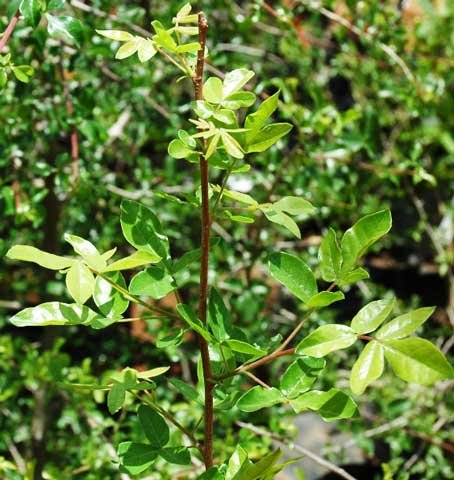Commiphora africana var. africana

Author: Ivan Lätti
Photographer: Johan Wentzel
Poison grub commiphora, African myrrh or in Afrikaans harige kanniedood (hairy cannot die) are some of the common names accrued to Commiphora africana var. africana (SA Tree List No. 270). It is a shrub or small tree reaching heights from 1 m to 4 m. It is a very common tree in Africa, of which only var. africana occurs within South Africa.
The three-foliolate leaves grow clustered or alternate and very hairy. C. schimperi The tree is deciduous, comes into leaf after the dry season.
The cup-shaped flowers grow in dense axillary clusters. They are greenish pink to red, small and inconspicuous. The four petals are straight, up to 5 mm long. Flowering happens around midspring. The fruit is a globose, fleshy berry becoming red when ripe. It splits in half, revealing the black seed on a red, four-pointed pseudo-aril.
The species distribution is Limpopo, North West, Mpumalanga and KwaZulu-Natal, as well as many African countries as far as Eritrea, Sudan and Senegal.
The habitat is lower altitude bushveld, rocky savannah and woodland. The species is not considered to be threatened in its habitat early in the twenty first century.
Many human uses have been found for this plant and its parts: The resinous gum is chewed and is the African myrrh of medicinal applications. The gum also serves as a termite repellent. Tea is made of the leaves. The soft wood is used in drop-traps for catching animals and the bark is applied with salt to snakebites. Growing the plants close together as live fences may still be happening. The leaves are browsed by animals, including camels in North Africa (Coates Palgrave, 2002; Schmidt, et al, 2002; http://redlist.sanbi.org).

